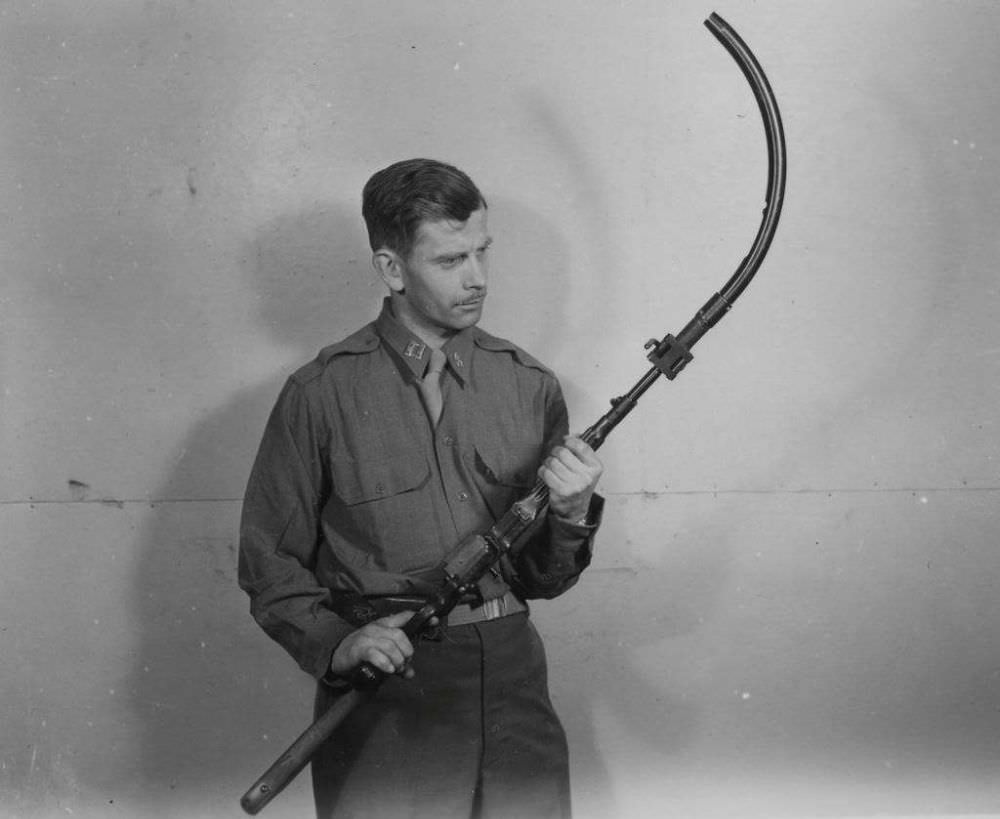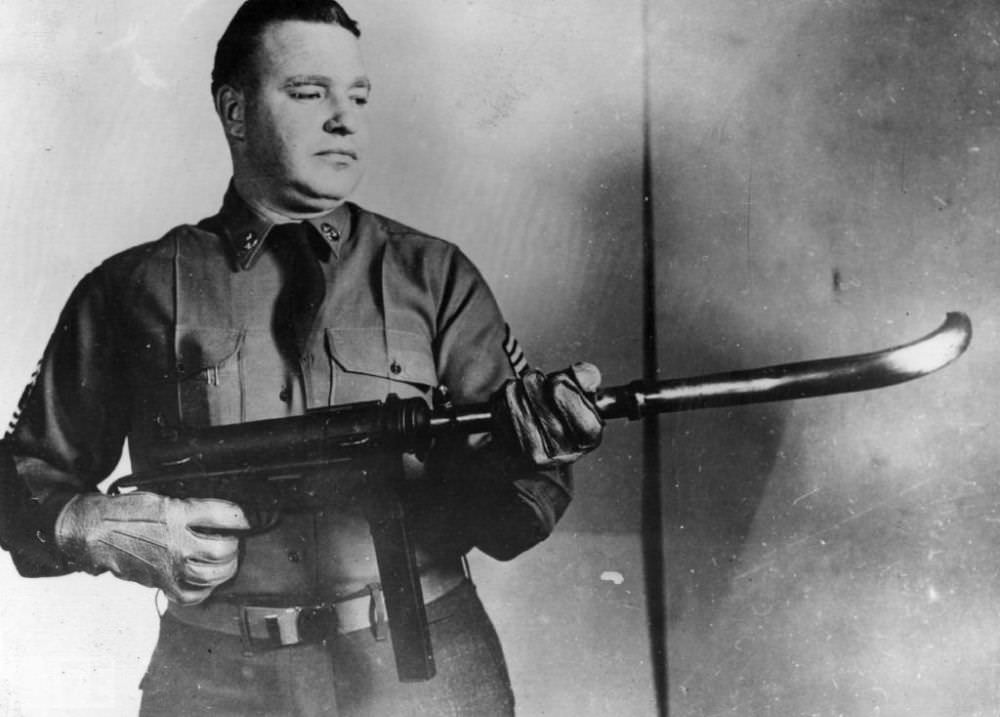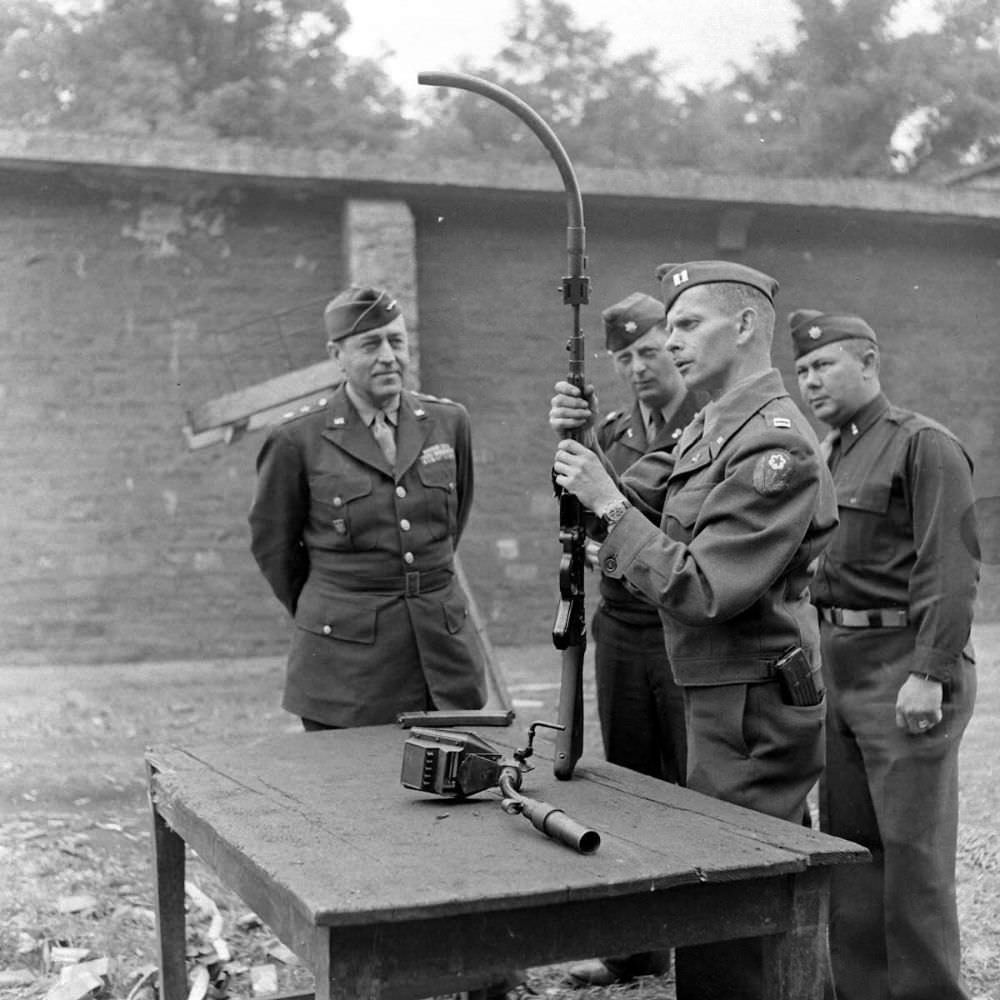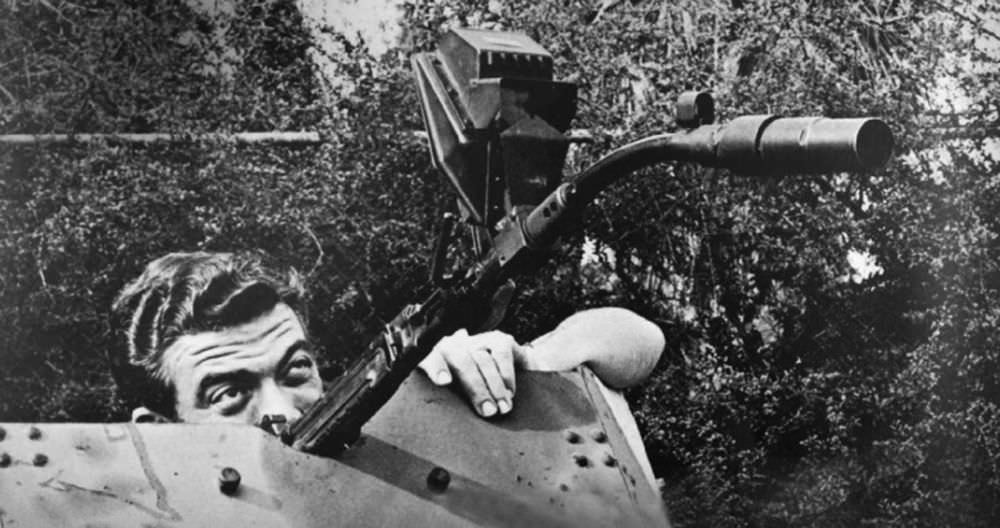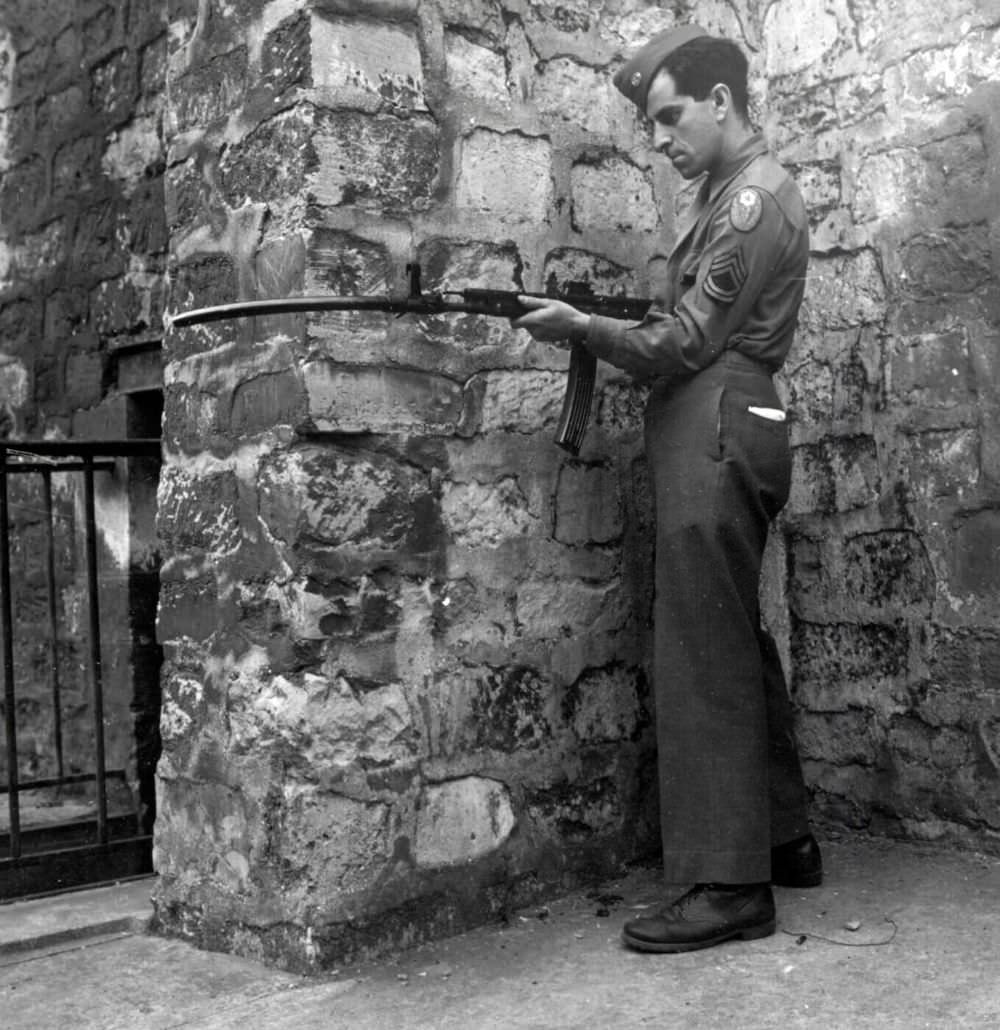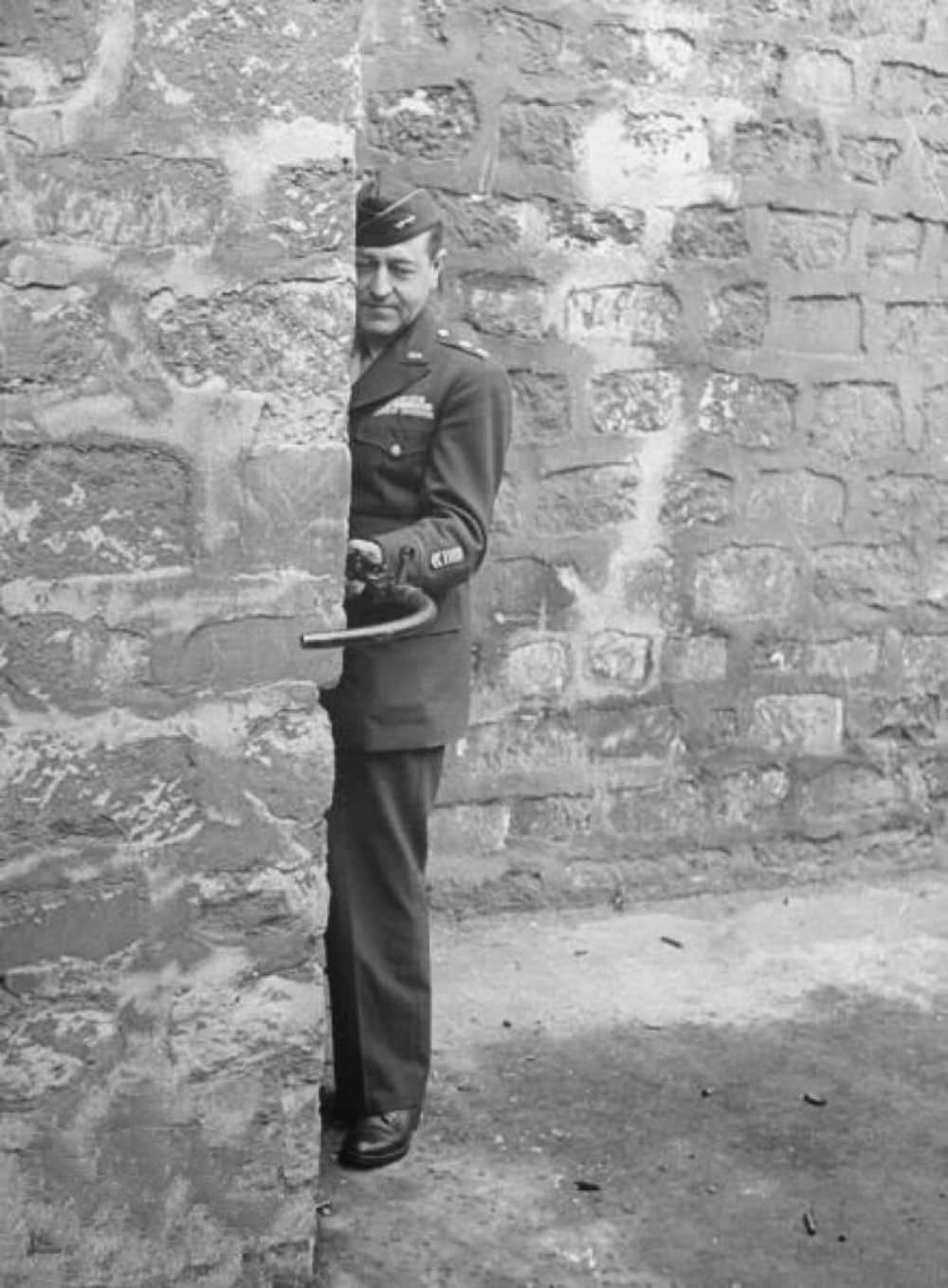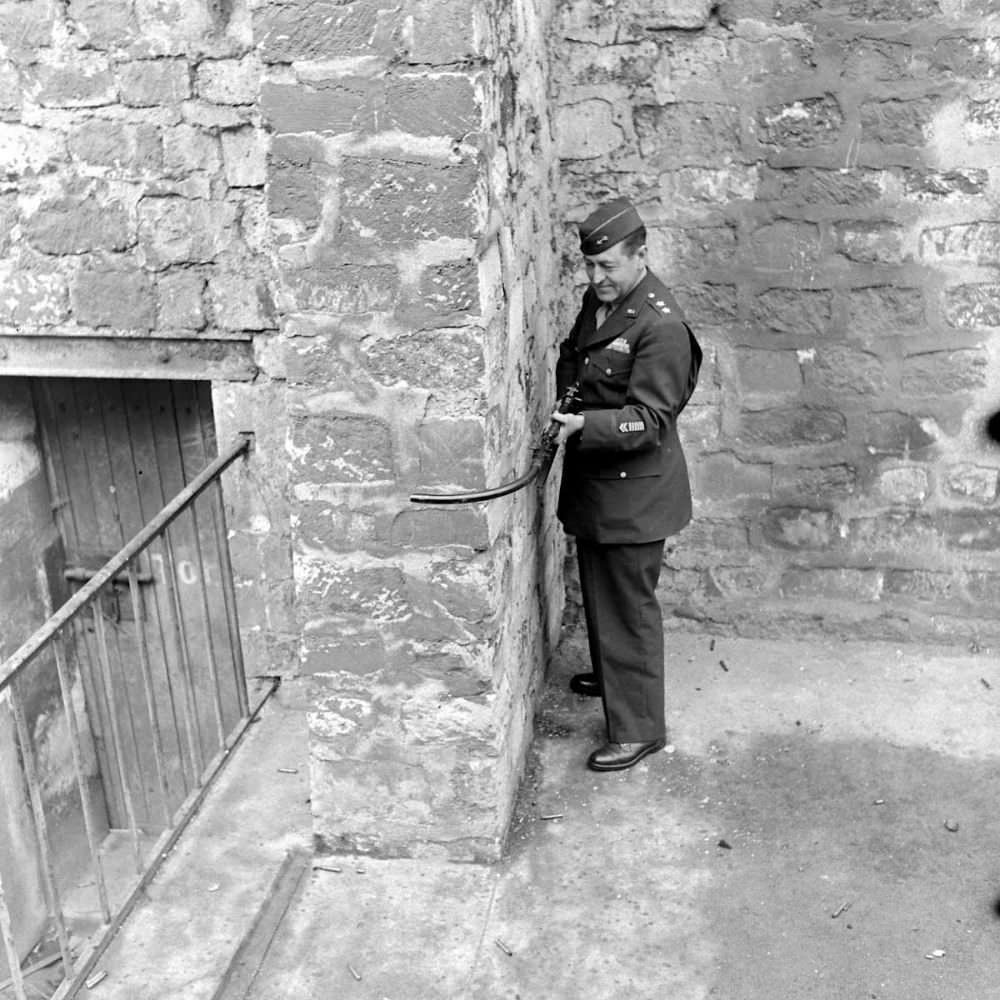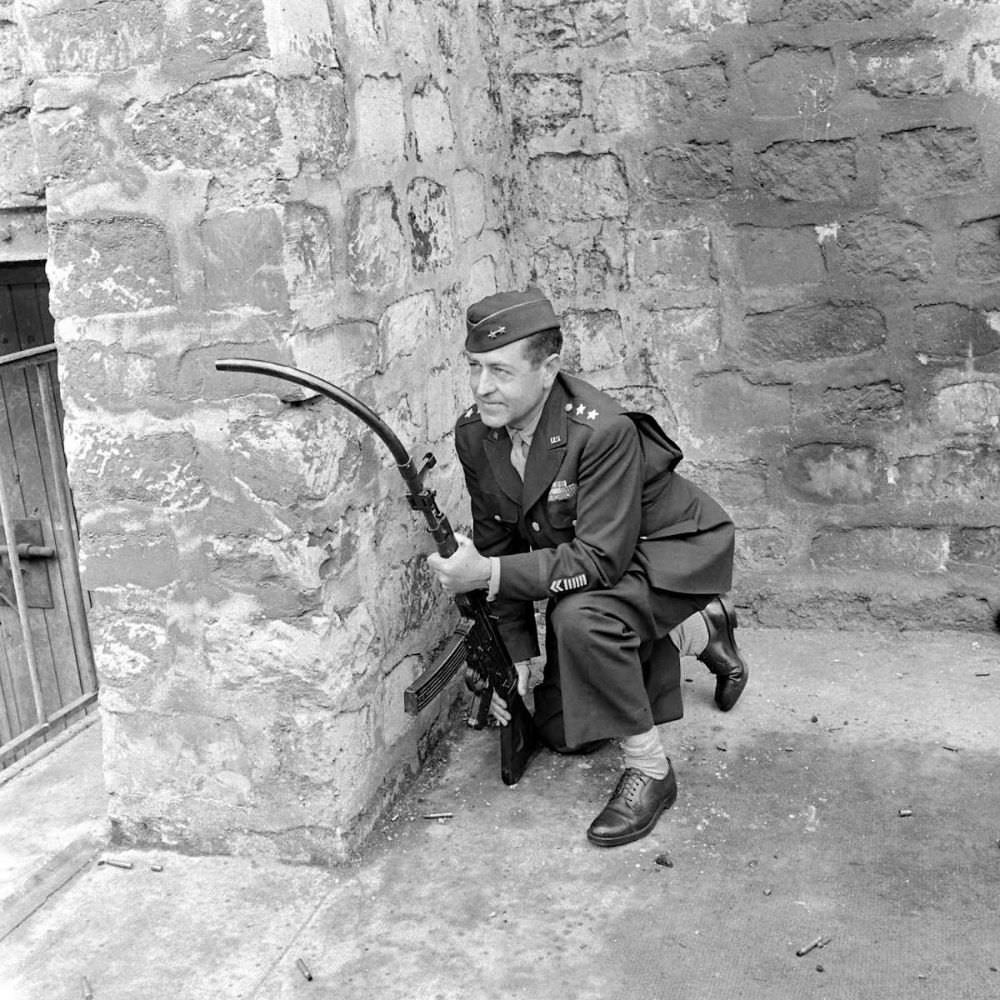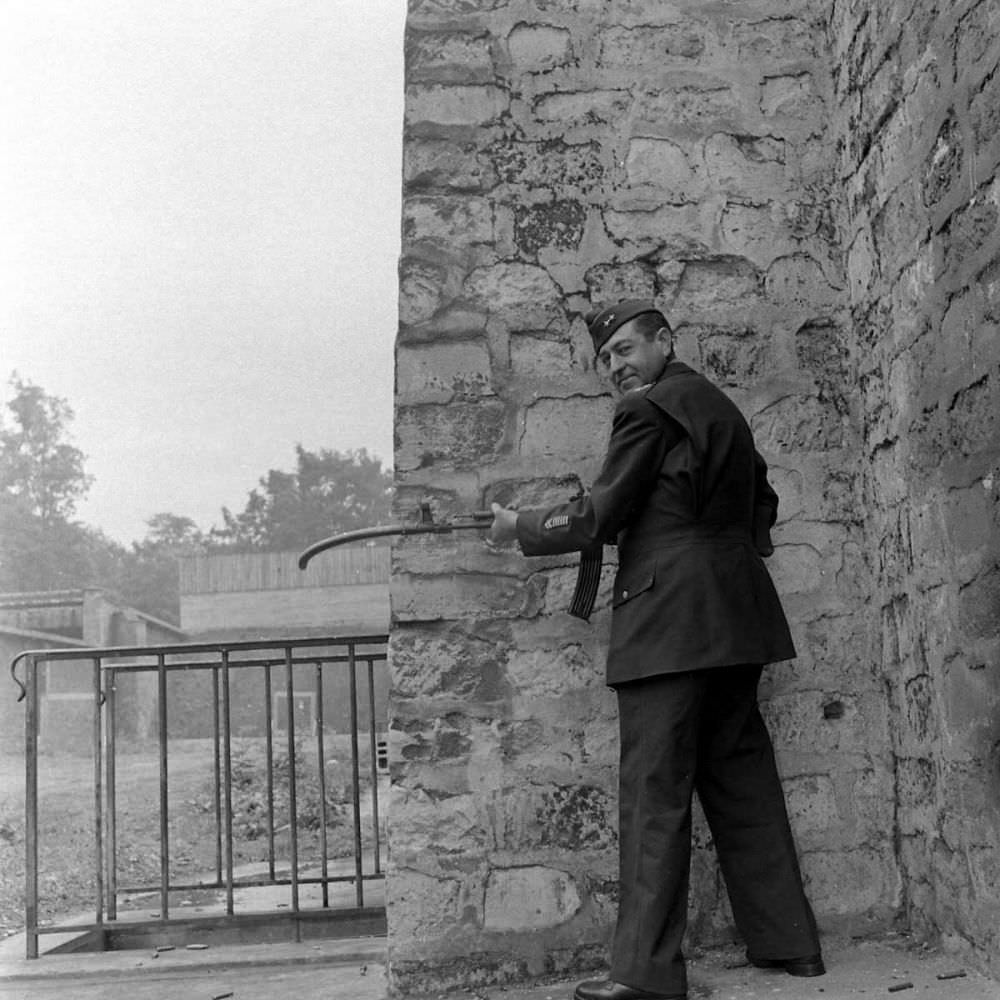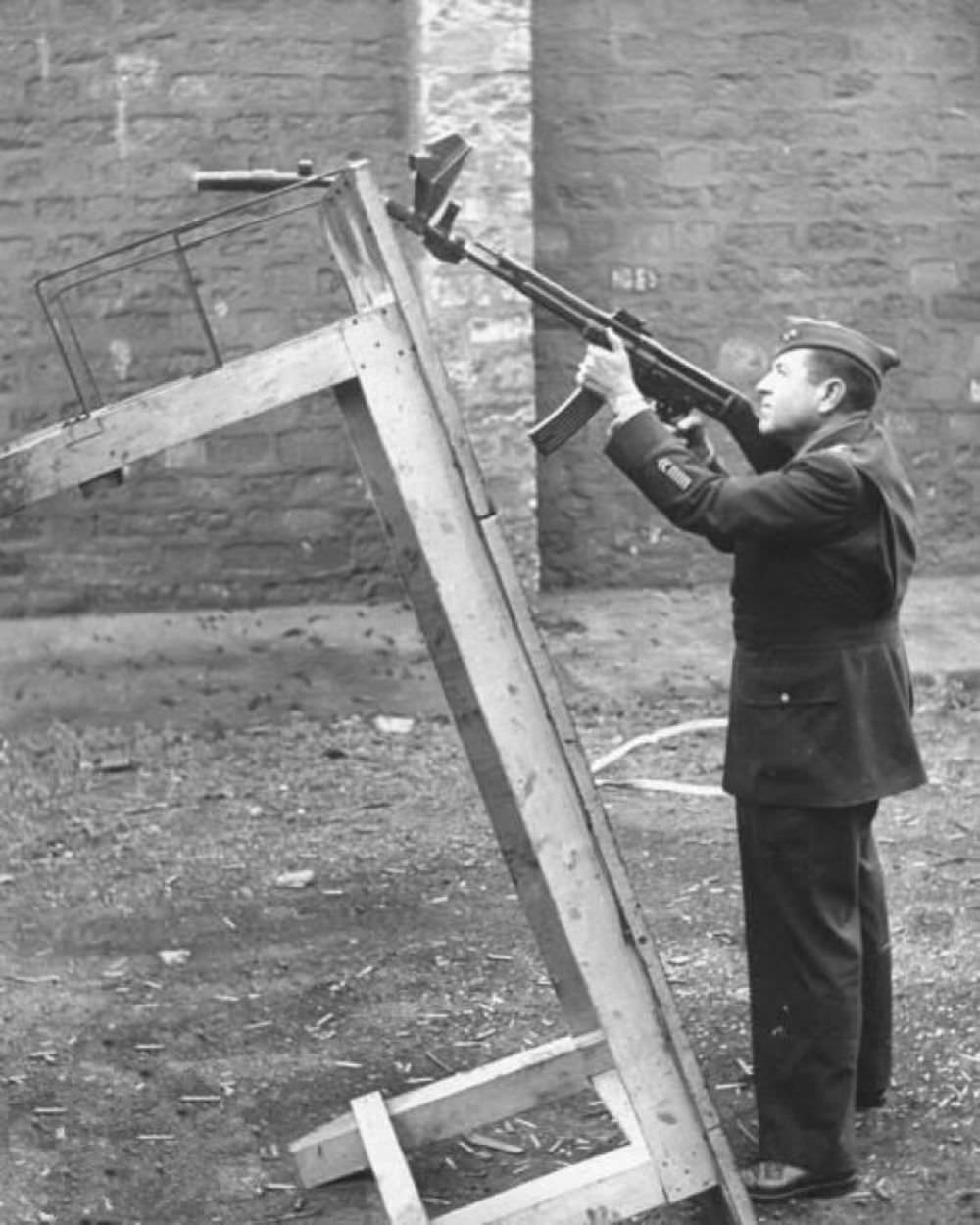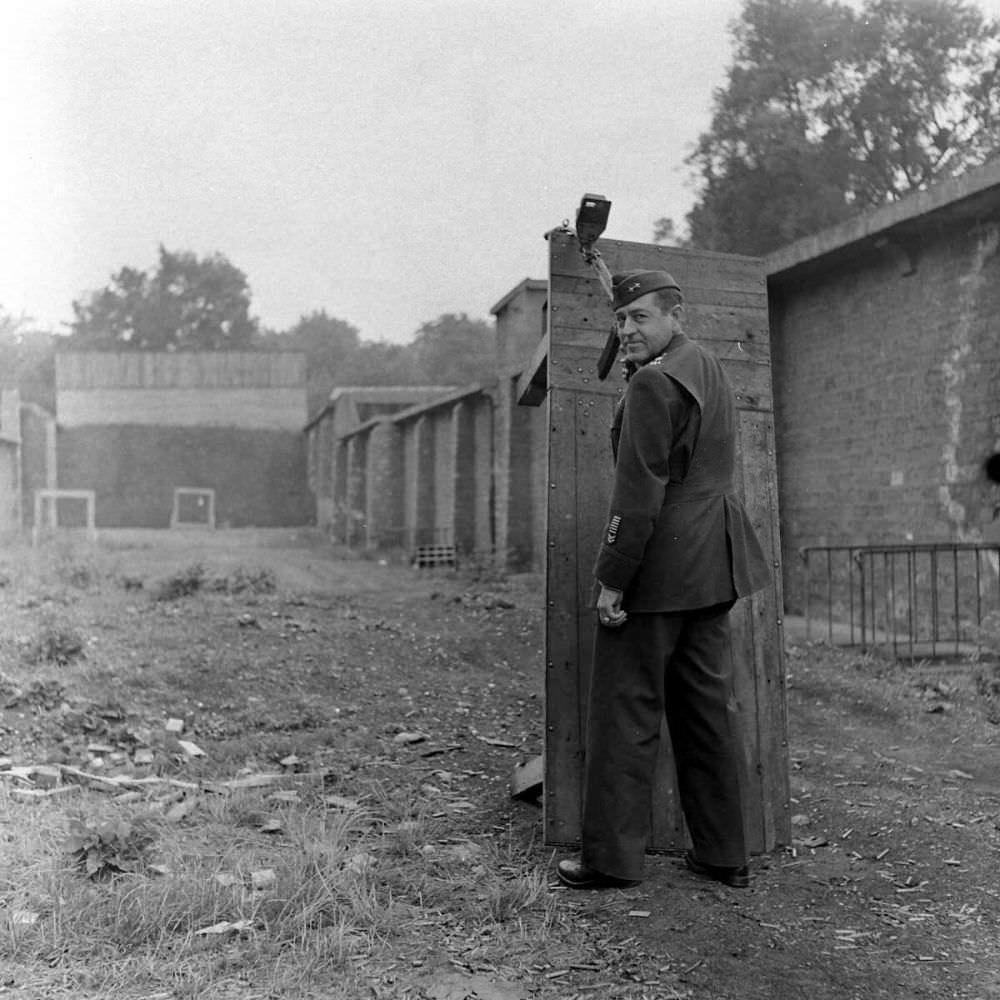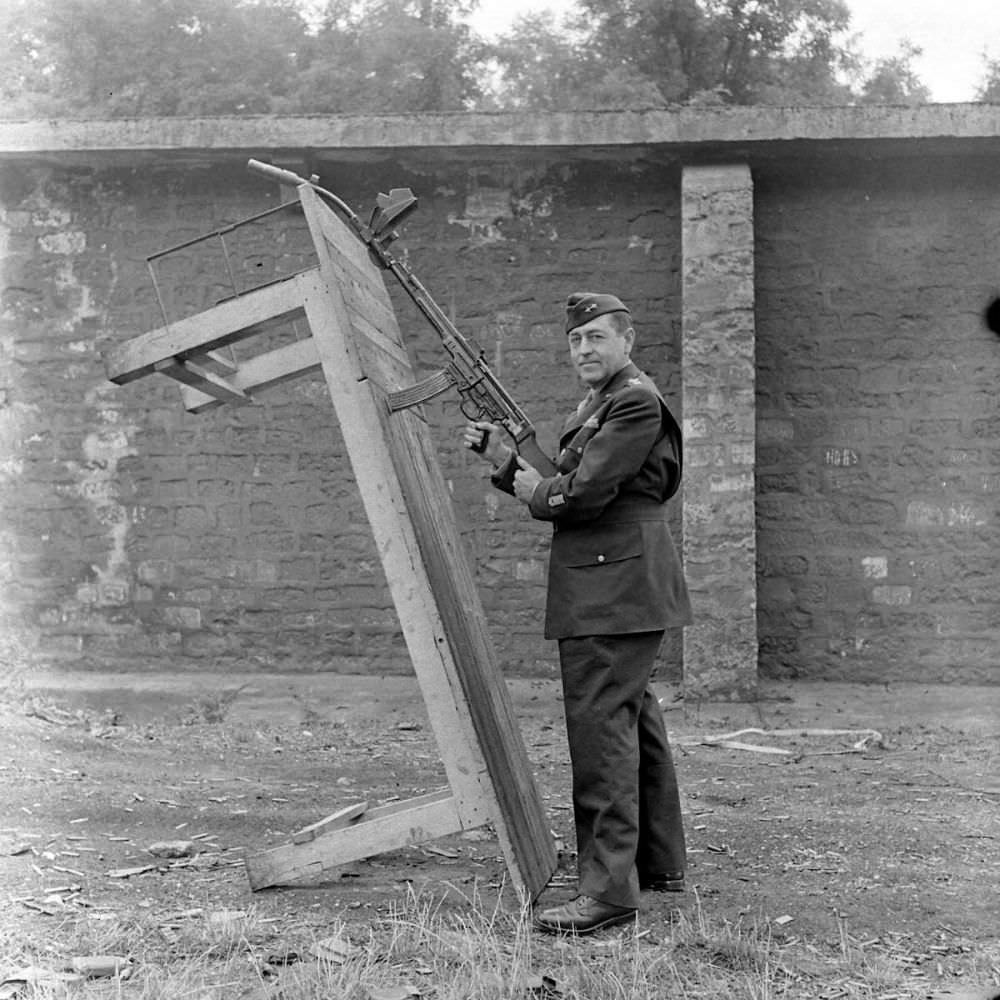The Krummlauf, or “curved barrel” in English, was a bent barrel attachment developed by German engineers for the Sturmgewehr 44 (STG44) assault rifle to allow soldiers to fire around corners without exposing themselves to enemy fire.
German engineers, renowned for their creativity and resourcefulness, pushed the boundaries of technology during WWII. Amidst their various projects, one that stood out was this peculiar invention designed to defy the laws of ballistics. It transformed the standard STG44 into a weapon that could literally shoot around corners.
The Krummlauf attachment was essentially a barrel that curved either 30 or 45 degrees. You might wonder how one would aim with such a device. The German engineers had it covered. They equipped the weapon with a periscope sighting device, enabling the shooter to aim while remaining safely behind cover. Test results showed that a skilled marksman could successfully hit a 35x35cm square from 100 meters. However, the curved barrel brought several challenges that needed to be tackled.
First and foremost, the lifespan of the curved barrel was short-lived. A 30-degree Krummlauf could only safely fire around 300 rounds before the barrel succumbed to stress and broke apart. The 45-degree version fared even worse, with a lifespan of roughly 160 rounds. The unnatural bend exerted immense pressure on both the barrel and the bullets, causing the latter to shatter into fragments, mimicking the dispersal pattern of a shotgun.
German engineers attempted to rectify this issue by drilling small vents into the barrel, which would release some of the gas pressure that drove the bullets. Although this solution reduced the weapon’s velocity and range, it unfortunately did not extend the barrel’s lifespan. Moreover, it created a new problem: the hot gases vented from the barrel blew back into the shooter’s face.
Despite the challenges, around 20,000 units of the STG44 Krummlauf were ordered. However, only 500 of them made it onto the battlefield. The innovative yet problematic weapon was intended to be mounted inside armored vehicles and tanks. This setup allowed for a full 360-degree field of fire, while the shooter remained safely tucked inside the vehicle.


